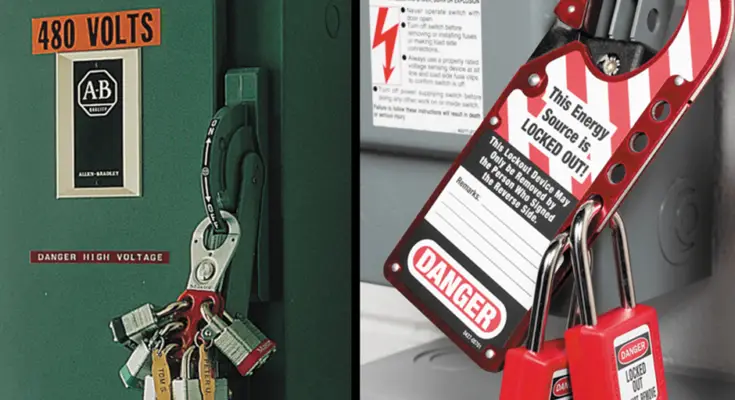Estimated reading time: 4 minutes
Machines and equipment in various industrial setups require frequent inspection, maintenance, and repairs. Professionals are assigned to carry out these tasks. However, these machines or equipment may contain hazardous energy.
What is hazardous energy? It can be electrical, mechanical, thermal, or any other energy stored in the machine. These energies may be released during equipment maintenance or repair, causing injuries or even fatalities.
To prevent such incidents, the professionals use lockout and tagout devices. These devices isolate the machine and also provide information to other people. There is a popular lockout tagout procedure that inclines with the OSHA regulations. Let’s learn about it in detail:
Understanding The Lockout Tagout Procedure
A Lockout Tagout procedure, or LOTO, is implemented in different industries to prevent machines from energising during maintenance. As the name suggests, the method utilises lockout and tagout devices and can use more than one of both kinds.
A lockout device prevents accidental hazard energy, while a tagout device informs the professional and others. A tagout device is integral in ensuring nobody operates the machine under maintenance.
According to OSHA regulations, a lockout and tagout device can only be used once in most cases. Similarly, lockouts should comply with the regulations and other essential certifications; you can find them on the RS Website.
A Guide To Complete LOTO Procedure
A LOTO procedure identifies and isolates all the energy sources connected and related to the machine. It then shuts down the equipment and de-energises it. Removing residual energy is integral, and proper lockout and tagout devices should be used. Here is a complete step-by-step guide:
1. The Preparation Stage
During the preparation stage, a supervisor and trained specialist—often the same person — will complete the procedure.
They will identify the machine or equipment that will shut down. The specialist will also identify all the energy sources and other potential hazards associated with the process.
2. The Notification Stage
There is usually a personnel who operates the said machine or equipment. They will receive the notification, and any other concerned party will receive proper notification. The notification phase covers information like:
- Equipment that will shut down.
- Personnel it will affect.
- Estimated time for the procedure (including repairs).
- Information about authorised individuals.
- Resources for query clarification.
3. Equipment Shutdown
At this phase, the machine will be shut down. Machine guarding standards will be implemented, covering normal production operations. The entire machine will shut down during this process, and all the machine parts are confirmed to stop before moving to the next step.
4. Isolation Of The Machine
Depending on the machine’s type, model, and build, it will be isolated from the energy sources. If there are power supplies, they will be removed and turned off. Any other extra energy supplies are also cut off, and the machine is isolated from all other equipment in the area for proper maintenance. This is the beginning of the de-energising, which takes place in the next step.
5. Energy Dissipation
It is a precautionary step where the specialist checks and removes any residual hazard energy from the equipment. The specialist might also use lockout devices like MCB and power lockouts to ensure the machine is adequately isolated.
6. Lockout And Tagout Installation
Multiple lockout devices will be used to isolate the device from energy sources and other functions. It won’t be accessible or operable by any personnel for the duration of the repair and maintenance.
Tags are also attached to spread information and awareness about maintenance. These tags might also contain information about each lockout and the parts or energy they lock. They might also contain the name of the person who carried out the lockout and any other relevant information.
7. Verification Of Isolation
During this process, the machine or equipment is checked for energy isolation for the last time. The personnel may try to tamper around and use the machine to see if all the energy is dissipated. Once confirmed, the repair process will take place.
These are all the seven steps of the OSHA LOTO Procedure before the repair or maintenance process is completed.
Share this content:



